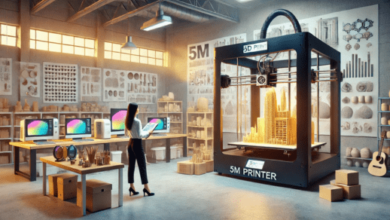The Impact of Arduino Kits on Technological Literacy

In recent years, technological literacy has emerged as a cornerstone of modern education, with an increasing emphasis on equipping students and enthusiasts with the skills necessary to thrive in a tech-driven world. Among the various tools and educational programs available, arduino kit have gained significant attention for their ability to enhance technological literacy across diverse age groups and educational settings.
The Arduino platform, initially developed for artists, designers, and hobbyists, has evolved into a versatile learning tool. The beauty of Arduino lies in its simplicity and accessibility. It provides an open-source electronics platform based on easy-to-use hardware and software, allowing users to create interactive projects. This hands-on approach to learning makes it an ideal tool for promoting technological literacy.
Bridging the Gap Between Theory and Practice
One of the most significant impacts of Arduino kits is their ability to bridge the gap between theoretical concepts and practical application. Traditional educational methods often emphasize theory over practice, which can lead to a disconnect between what students learn and what they can do. By contrast, Arduino kits encourage active learning through experimentation and problem-solving, fostering a deeper understanding of electronic and programming principles.
Fostering Creativity and Innovation
Arduino kits empower users to explore their creativity and bring their ideas to life. With the flexibility to build a wide range of projects—from simple LED circuits to complex robotics—learners can tailor their educational experience to match their interests and skill levels. This capacity to innovate not only boosts technological literacy but also cultivates critical thinking and engineering skills, which are essential in today’s rapidly evolving technological landscape.
Accessibility and Community Support
Another vital aspect of Arduino kits is their accessibility. The relatively low cost of entry makes them an attractive option for educational institutions and individuals alike. Furthermore, the global Arduino community offers extensive resources, including forums, tutorials, and project ideas, which provide invaluable support to learners at all levels. This sense of community helps to democratize technological education, making it more inclusive and widely available.
Impact on Education and Beyond
The integration of Arduino kits into educational curricula has been shown to increase engagement and enthusiasm for STEM (Science, Technology, Engineering, and Mathematics) subjects. By providing a tangible connection to real-world applications, these kits help demystify technology, making it more approachable and less intimidating. Beyond formal education, Arduino kits have sparked a DIY (Do-It-Yourself) culture that encourages lifelong learning and exploration.
In conclusion, Arduino kits have had a profound impact on technological literacy by making technology accessible, engaging, and practical. As we move forward into an increasingly digital age, tools like Arduino will be crucial in preparing individuals to meet the challenges and opportunities of the future. By fostering creativity, critical thinking, and hands-on learning, Arduino kits are not just teaching technology—they are inspiring the next generation of innovators.




